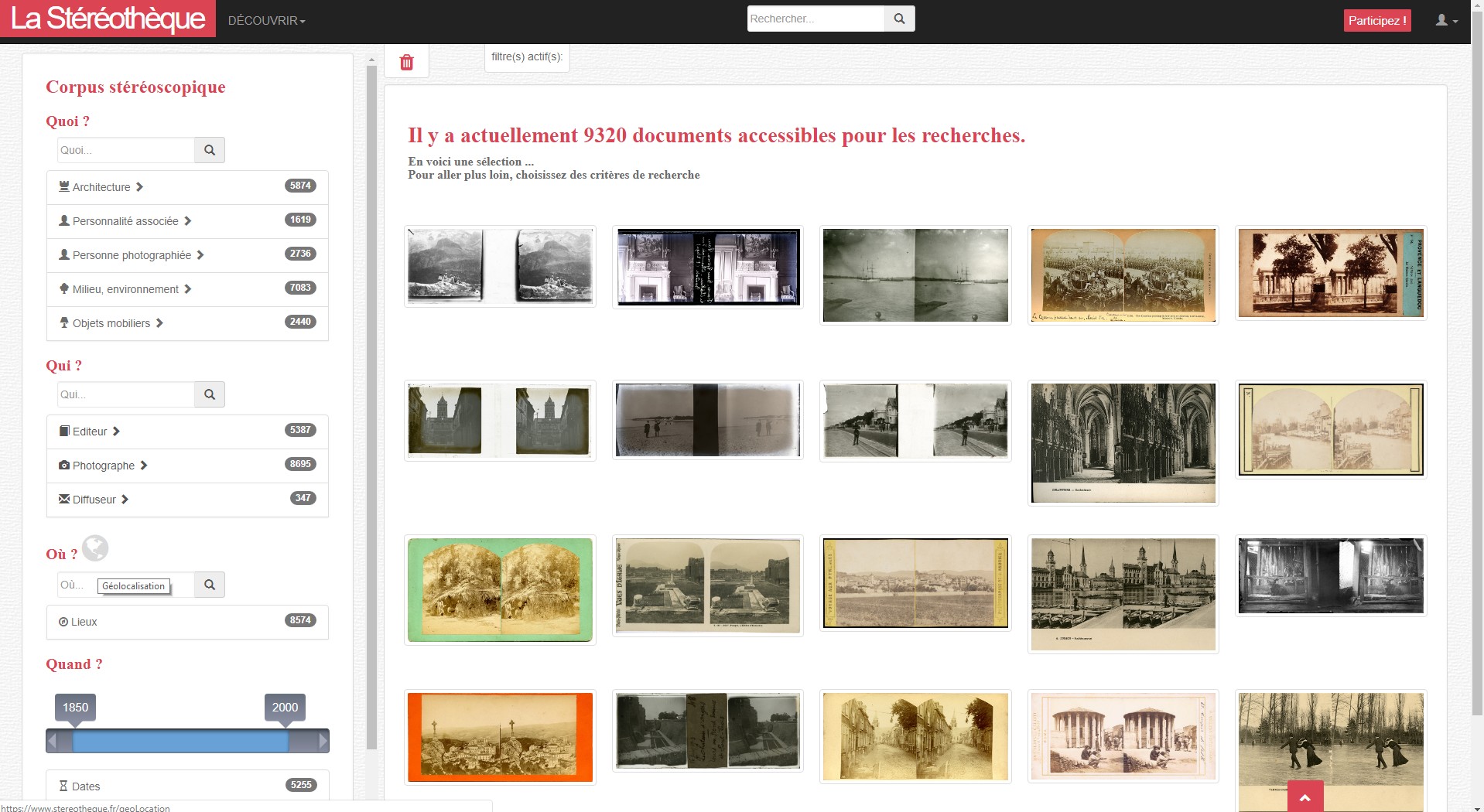ArcheoGRID is a Web application (https://www.archeogrid.fr), initiated more than 10 years ago to archive and disseminate digital iconographic research data. Today, it has become an essential tool for the collaborative management of all types of documentation for SHS projects with a 3D component. The challenge of ArcheoGRID is to integrate semantic data with digital data in order to be able to exchange this information according to current standard exchange protocols (OAI-PMH, RDFa, DublinCore) and to fully participate in the opening of research data.

The data contained in ArcheoGRID is accessible through the interface originally called “tabloid” which simulates a light table on which it is possible to view “slides” in batches. A viewer allows you to consult each slide on the light table individually and to consult the metadata associated with each slide. The typology of the documents having evolved, it is now possible to treat not only iconographic documentation but also texts, sounds, videos or even json, 3D files, …

The data placed in ArcheoGRID / Projects are intended to serve as basic documentation for scientific restitution projects of remains that have partially or totally disappeared. The list of research projects is visible to all, as well as the general data of the project if it is filled in. However, to access the content of a project, you must have a personal account, assigned to any researcher participating in the project. In this case, the lower tree of the project is accessible. It gathers all the documentation necessary for the 3D restitution work. The data are organized in the same way, whatever the project.
- « In situ » data
- « scattered » data
- « iconographic » data
- « text » data
- on-site surveys (any kind of survey)
- Hypotheses of previous restitutions (physical models, drawings, digital models, texts)
- Additionnal documents (possible parallel documentation and from other sites)
Each researcher can add his own information if he wishes, as long as he has an account. ArcheoGRID also uses a particular structure of “unicos” and “unitexts”. These are image or text fragments from a document that allow the manipulation of the semantic content of the images and texts thus cut out.

For all 3D projects, we define a thesaurus describing the “volumetric” hierarchy of the archaeological sector concerned by the project. This 3D nomenclature constitutes the backbone of the project after its validation by the team members. From any element of the digital model it becomes possible to query the associated documentary bases.
Archeogrid and its associated database are regularly reviewed to be updated, to integrate the latest versions of the technologies used but also to add new functionalities of consultation according to the needs.
In 2020, following the creation of the Notre-Dame scientific worksite by the CNRS and the Ministry of Culture, ArcheoGRID became the essential tool needed for the fine management of all the documentation for the Notre-Dame worksite. ArcheoGRID is now one of the building blocks of the nDame ecosystem of the Digital Data working group of the scientific worksite Notre-Dame and is mainly used for the semantic enrichment of the building site’s data for future correlations of information and for a better dissemination afterwards.
To go further, ArcheoGRID was used as a basis to develop a new service: the Stereotheque. This collaborative site, operated by CLEM, is fed by the STEREO part of the Archeogrid corpus.

All ArcheoGRID data, files and databases, are hosted by the Huma-Num Very Large Research Infrastructure, which also operates part of our web services servers and backs up all laboratory and cell data.

The data contained in ArcheoGRID can be harvested by engines to join the semantic web.
This is the case for all stereo data integrated in the Stereotheque: the images are indexed and then harvested by Isidore, the SHS search engine operated by Huma-Nu

